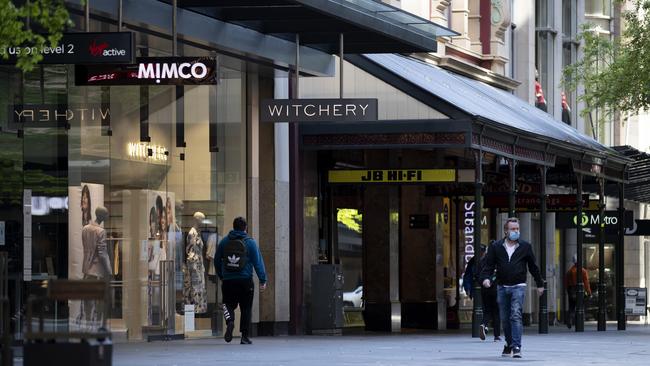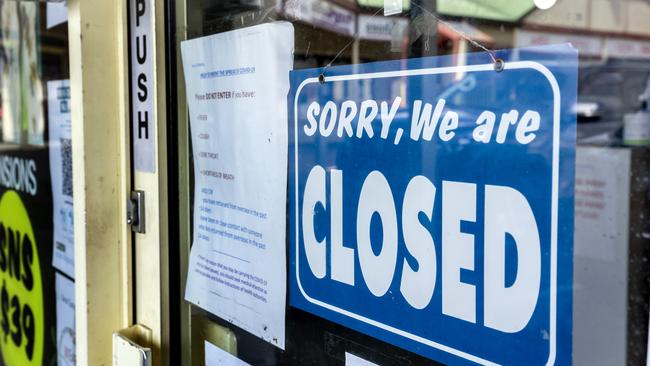CreditorWatch warns business failures to increase across Australia as inflation, weak demand hits
A rising flood of company failures and a spike in bad loans are on the horizon across the country in the coming 12 months, with Queensland most at risk amid soaring construction costs.

A rising flood of company failures and a spike in bad loans are on the horizon in the coming year as consumer and business sentiment deteriorate under the weight of sticky inflation and cost-of-living pressures.
Credit reporting bureau CreditorWatch has warned a large increase in business failures will occur in the next 12 months, with many trading at a loss now not likely to survive until July 2025.
Business failures were predicted to increase in about 90 per cent of regions, with Western Sydney and South-East Queensland to fare the worst. Queensland is the most at-risk state as it battles soaring construction costs.
It comes as the average value of invoices held by businesses dropped 51.5 per cent in the year to July 2024, reflecting a significant reduction in orders from suppliers due to falling consumer demand.

CreditorWatch CEO Patrick Coghlan said businesses across Australia were experiencing the toughest conditions on record.
“The fact that almost 90 per cent of regions will see an increase in the rate of business failures indicates that the current pressures from interest rates, cost increases and declining consumer demand are being acutely felt right around the country – particularly those areas with younger populations and a higher proportion of businesses in high-risk sectors,” he said.
Bringelly-Green Valley, Merrylands-Guildford, Mount Druitt and Canterbury in Sydney’s west had the highest forecasted business failure rates in the country over the coming year of between 7.6 per cent and 7.9 per cent.
Browns Plains in Logan was most at risk in Queensland with a project failure rate of 7.5 per cent, while Ormeau-Oxenford, Springfield-Redbank and Surfers Paradise were in the top 10.
Many businesses in these regions continue to struggle in the high-interest rate environment. Households in suburbs surrounding these areas tend to be highly indebted and on lower-than-average incomes, which means they are spending less in their local communities.
Commercial property prices and rents in Sydney and South-East Queensland are also relatively high, according to CreditorWatch, with Queensland having the added burden of high and still increasing construction costs which is making it difficult to add new supply and relieve pressure on commercial rents.

Queensland is expected to suffer the highest average rate of business failure over the next 12 months of 6 per cent, with Western Australia predicted to experience the largest average increase in business failures. Tasmania has the lowest forecast average failure rate of 4.76 per cent.
Mr Coghlan said Queensland and Western Australian businesses were being hampered by lingering price increases, particularly in the construction sector, despite their respective state governments being in a strong fiscal position. “In some ways, this strong fiscal position makes the task of getting inflation under control harder, as state government spending fuels price increases, particularly in the construction and healthcare sectors,” he said.
Mr Coghlan said many businesses were now hoping the Stage 3 tax cuts would help to boost consumer confidence and result in more demand for products.
“Our hope is that the Stage 3 tax cuts will continue to boost consumer confidence to some extent, but we don’t expect a significant improvement in conditions for businesses until the impacts of one or two rate cuts are felt by households.”
Food and Beverage Services tops the list for business failure rates at 8.3 per cent.






To join the conversation, please log in. Don't have an account? Register
Join the conversation, you are commenting as Logout